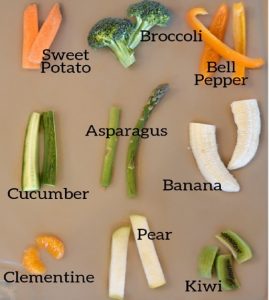Tip one: give it time
Eating is a whole new skill. Some babies learn to accept new foods and textures more quickly than others.
Keep trying, and give your baby lots of encouragement and praise. Allow plenty of time, especially at first.
Tip two: don't rush them
Go at your baby’s pace and let them show you when they’re hungry or full.
Stop when your baby shows signs that they’ve had enough. This could be firmly closing their mouth or turning their head away.
If you’re using a spoon, wait for your baby to open their mouth before you offer the food.
Do not force your baby to eat. Wait until the next time if they’re not interested.
Tip three: have lots of options

Be patient and keep offering a variety of foods, even the ones they do not seem to like.
It may take ten or more tries for your baby to get used to new foods, flavours, and textures.
There will be days when they eat more, days when they eat less, and days when they reject everything. There’s no need to worry—this is perfectly normal.
Tip four: get hands on
Let your baby enjoy touching and holding the food. Allow them to feed themselves, using their fingers, as soon as they show an interest.
If you’re using a spoon, your baby may like to hold it or another spoon to try feeding themselves.
Tip five: keep focused
Keep distractions to a minimum during mealtimes and avoid sitting your baby in front of a television, phone, or tablet.
Tip six: lead by example
Show them how you eat. Babies copy their parents and other children.
Sit down together for family mealtimes as much as possible.


